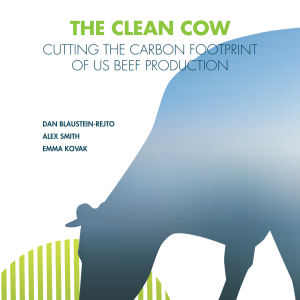
This report from US think-tank The Breakthrough Institute assesses technologies and management practices that could reduce greenhouse gas emissions from the US beef sector. It estimates that full adoption of existing mitigation options (as special feed additives, composting manure and particular grazing patterns) by 2030 could reduce US beef emissions by 18%.
Furthermore, it identifies a set of “breakthrough technologies” - still in the early stages of research - that if fully implemented alongside existing practices by 2030 could reduce US beef emissions by 48%. These breakthrough technologies include methane-reducing feed additives that can be given to grazing cattle (as opposed to feedlot cattle), enhanced root crops that can sequester carbon, and breeding cattle that produce less methane.
The figure below illustrates the potential of each mitigation option.
Image: Figure 3, Blaustein-Rejto et al. Potential of existing and breakthrough technologies and practices to mitigate GHG emissions of US beef production. Estimates shown are based on full adoption of practices, calculated using projected 2030 emissions from traditional beef breed cattle as the baseline.
The report does not appear to address the possibility of reducing levels of beef production or consumption.
Read the full report, The Clean Cow: Cutting the carbon footprint of US beef production, here. See also the TABLE explainer Focus: The difficult livestock issue.












Post a new comment »